A Furmint from 1971, DRC’s first-ever Corton-Charlemagne and many more in our Drinks Editor, Peter Dean’s top 10 wines of 2022.
2022 was full-on magnificent for the wine scribe. Putting aside wars, plagues, pestilence and other first world problems, if you were fortunate enough to have the ‘gruelling’ job of tasting wines last year you were privy to an extraordinary ‘coming out’ of winemakers with their ‘special stuff’.
If 2020 was the Year of the Zoom and 2021 firing on just a few cylinders, 2022 was a year when wine tasting was in rude health – tasting wines face-to-face with winemakers, sampling the new projects conceived during Lockdown, going on trips and sharing an array of rare and ridiculously good bottles.
It was as if the absence of hospitality for a couple of years had created a logjam of ageing wines that needed to be opened, or maybe it was that sense of mortality we all shared which laid waste to the notion of hanging onto that special bottle for any longer than was strictly necessary.
And what special bottles they were.
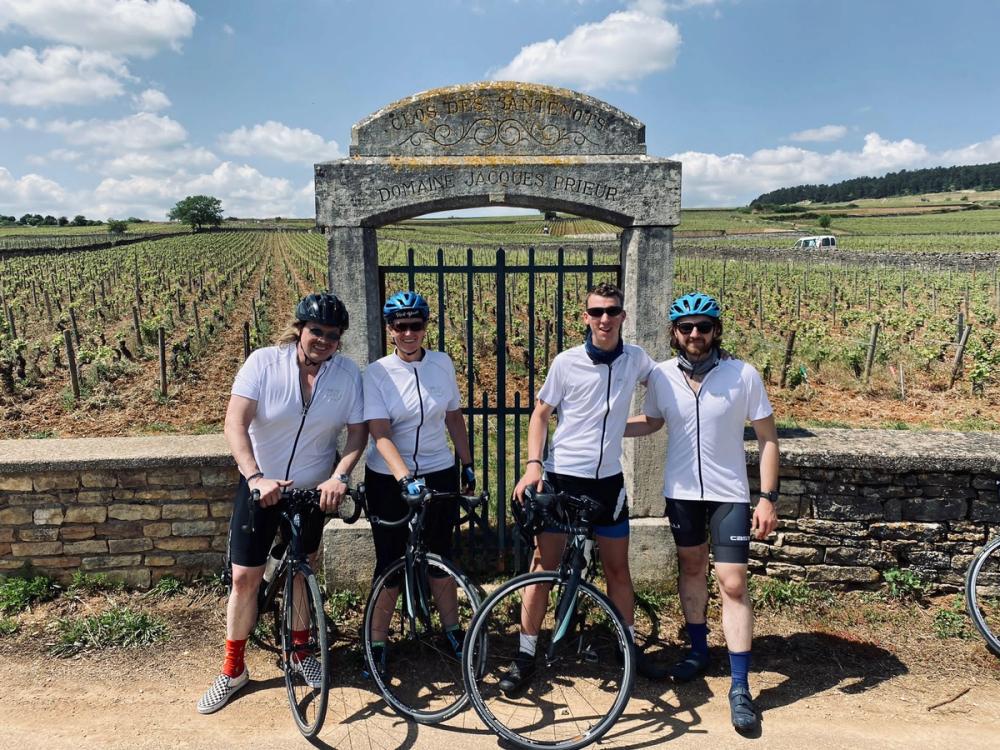
Bike to Care: (l-r) Slade Rushing (Louie), Joanne Taylor-Stagg (Athenaeum), Jack Evans and Luke Harbor (The Pig Hotel)
For me there were four wine events in 2022 that stood out and from each of which I could easily have sourced my top 10 wines of the year. Bike to Care was a 200km charity cycle ride through Burgundy; VieVinum was the return of Austria’s bi-annual wine fair; Legendary (H)ermitage was a tasting and dinner in London; and Harvest Gathering was an insanely good tasting in an old Ministry of Defence munitions store in Wiltshire where my last memory was of a wine journalist filling up her bidon with Mouton Rothschild 1986 for the train ride home (“research” apparently). More of that later.
There were many exciting new cuvées tasted throughout the year – a good year for lighter styles (or ‘glu glu’ wines if you want to get all Shoreditch); Nieeport’s Drink Me Nat Cool was one of a number of quaffable new wines from Portugal; in Austria which is also an epicentre of vinous excitement these days, I enjoyed Heinrich’s pet nat Oh When the Saints, Dorli Muhr’s fun-filled Zweigelt Nouveau and the (newly-released) 2012 Rotgipfler from Winzer Familie Gregor Schupp which Chris Wilson kindly flagged. Wilson’s own Pinot Noir on his Gutter&Stars label proved you can find ripe, still wines in the UK while Domaine Gayda’s red and white Altre Cami project in the Languedoc showed that exciting Grenache is not just an Iberian thing.
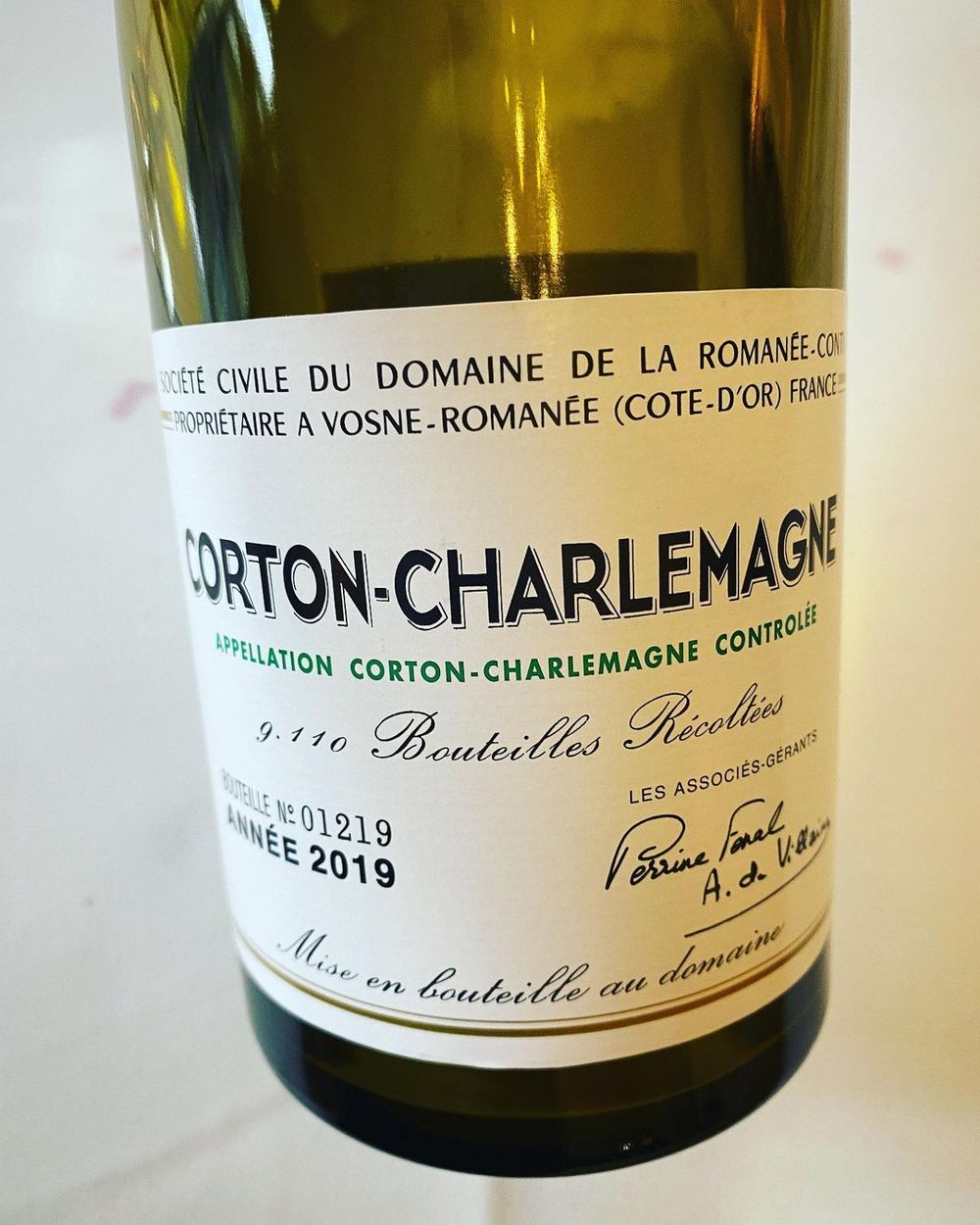
But for me, the new cuvée that was peerless in 2022, and which is my first pick of the wines of 2022 was Domaine de la Romanée-Conti, Corton-Charlemagne 2019 which was a masterclass in picking the fruit at the right time and achieving balance in a hot vintage. The estate has leased a 2.9-hectare site from Bonneau du Martray and managed to avoid that house’s sometimes intensely ripe style by finding a bedrock of acidity that carries the dense power and richness of the site. A marriage made in heaven and a quintessential Corton-Charlemagne.
Another fine match is fine wine and cycling, of course. A lesson learned last year is that if you agree to sign up for a charity cycle ride try to make sure that a/ your fellow riders are sensational winemakers and b/ you are riding through their home turf. Bike to Care was a ride from the bottom to the top of Burgundy and fellow riders were Bertrand de Villaine, Guillaume d’Angerville, Pierre-Henry Gagey, Dominique Lafon… you get the drift.
There were 100 of us in all, teams came from all over and we raised €230k for hospitality charities. The daytime was all about getting to understand the terrain and pedaling a lot, the twilight hours was a total immersion in perfectly aged Burgundy. DRC on self-pour… behave!
“We all have loads of this,” said Lafon nonchalantly, waving away my gratitude as we tucked into one of his sensational 2009 1er cru Mersaults over dinner.
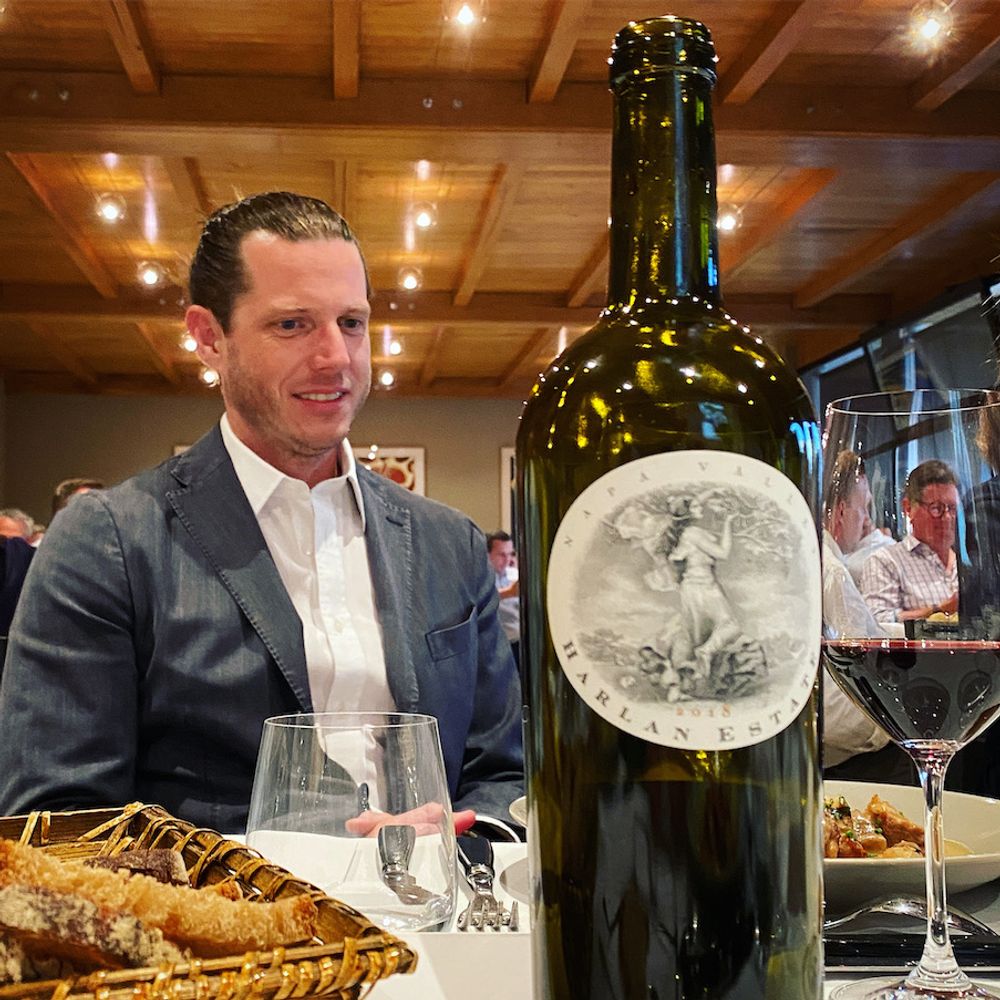
Will Harlan with the latest 2018 vintage, May 2022
One of the Bike to Care cycle teams was from Harlan and, bizarrely, my top wine of this trip was the Harlan Estate 1993 which they brought along for one of the dinners. The vintage is arguably not their best but, on the night, it could have slayed any number of Bordeaux blends. Remarkably fresh but showing a lot of complexity both aromatically and on the palate which was as fresh as a daisy – although still rich, powerful and with fine-grained, ripe tannins lending structure. Truly sublime. Many thanks to Patrick and the rest of the Hatch Mansfield for helping to make the event happen.

Wine tastings in London got back into full swing last year and Bibendum’s portfolio tasting in March was a splendid (crowded) affair. Lots of great wines on show but the aged Furmints that were being shown by Slovenia’s Puklavec Family Wines were a real surprise. It’s easy to forget that Slovenia has a slice of the Tokaj wine region and the dry Furmint 1971, p&f wineries archive, in particular, will forever remind me of this fact. The winery has been squirreling its best wines away for generations as far back as 1959 and with dry styles all the way up to the richest TBAs.
What was so surprising about the 1971 was that this was clearly a mature wine but Dorian Gray-like thanks to the high acidity (8.8 g/l) that has kept the wine in pristine, youthful condition. Golden yellow in colour with a greenish hue, the nose was complex with linden blossom, spice market, honey, cheese and smoke; the flavours included dried figs, apricots, caramel, old fine wood with attractive dried spices. Really quite delicious and a steal at €109 a bottle.
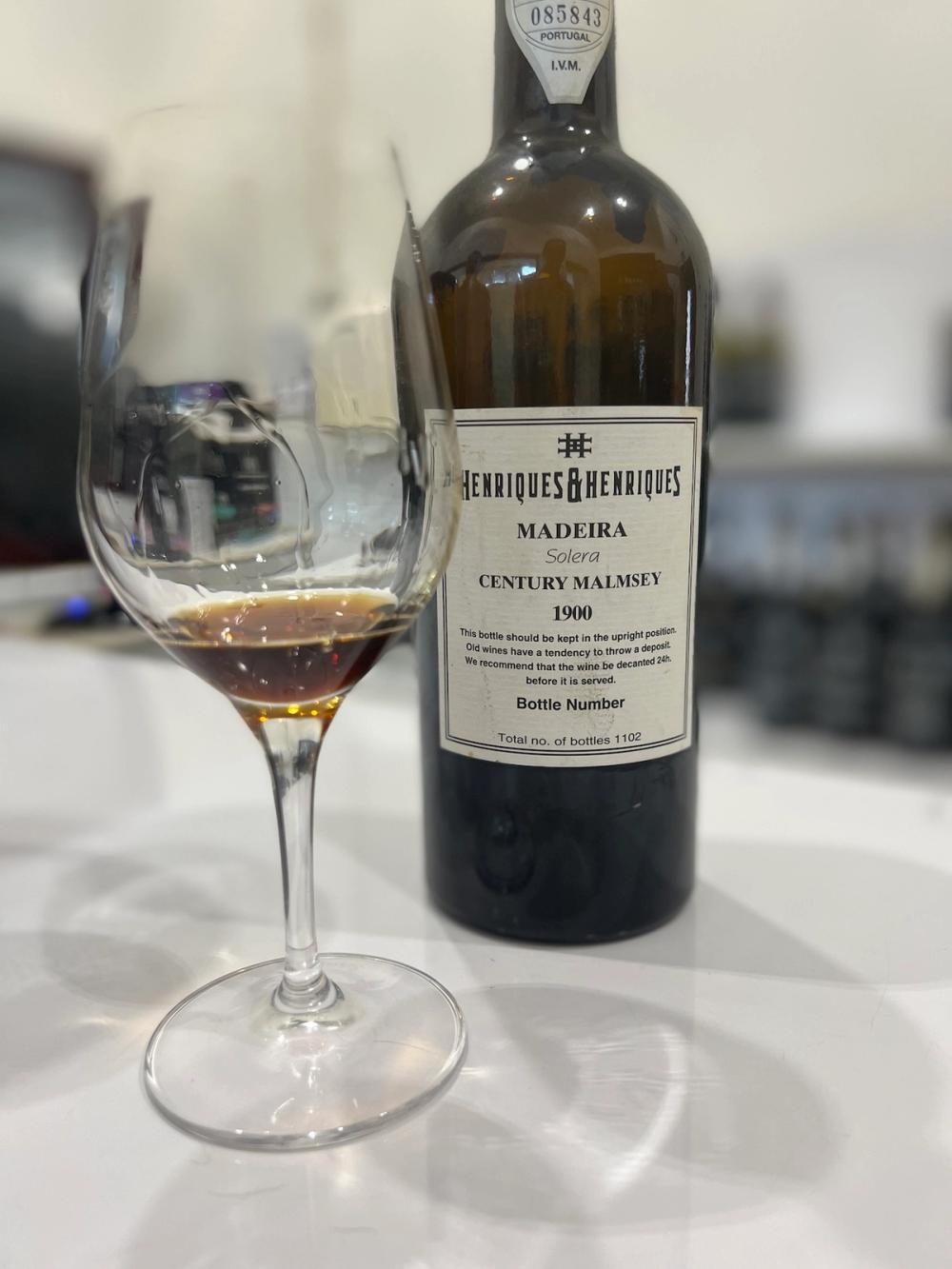
Furmint has the capacity to age almost indefinitely as has Madeira of course. A November jaunt to the Portuguese island witnessed a spectacular tasting of aged wines at Henriques & Henriques which culminated in a 100 year old Malvasia.
Century Malmsey, Madeira, 1900, Henriques & Henriques was as dark and brooding as the island’s Jurassic Park-like interior – full-bodied and very rich with earth, leather, tea, boot polish and wood rising out of the glass and a candied fruit twist on the palate – that acidity still keeping the finish long and fresh.
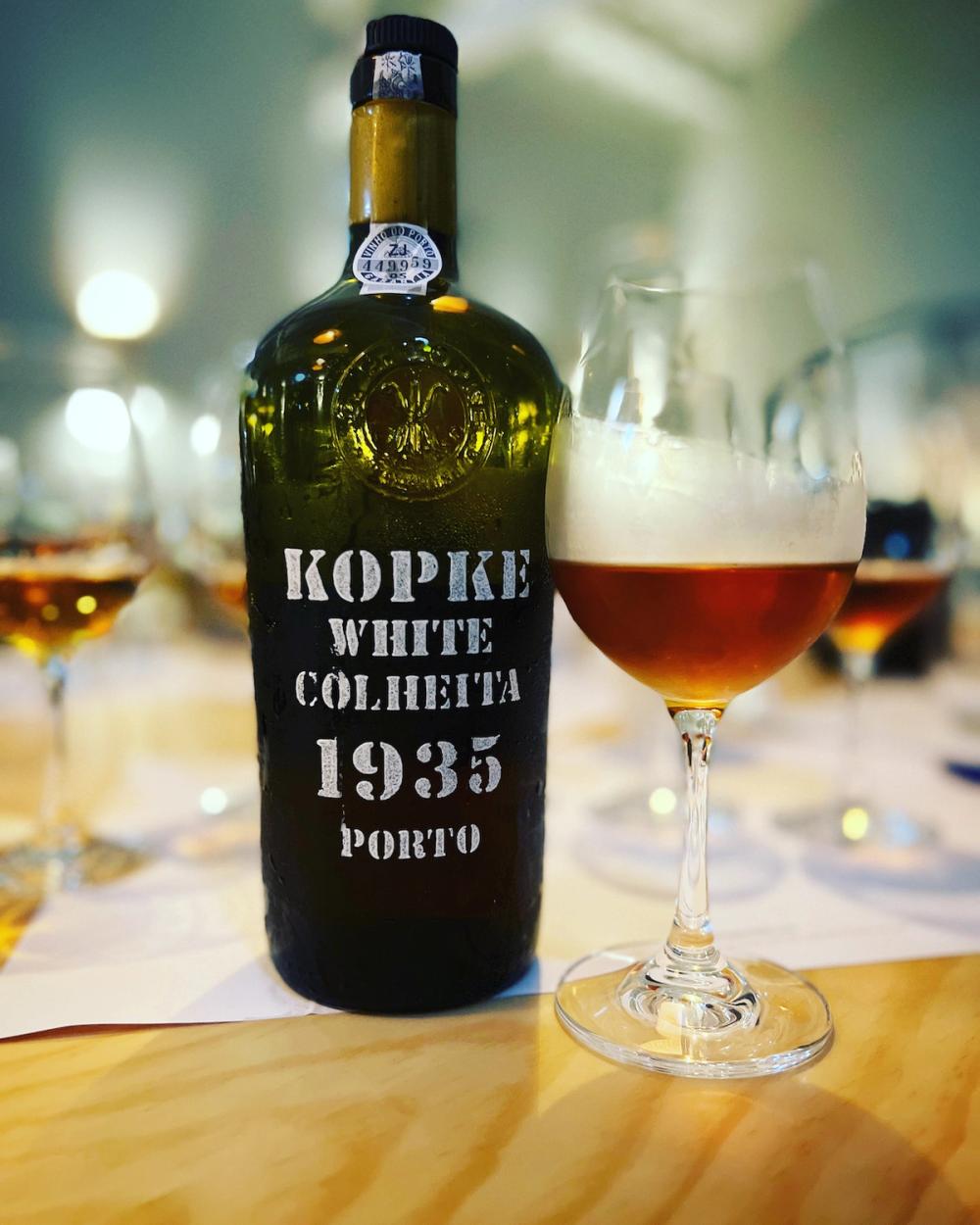
You cannot help but feel honoured uncorking historical bottles like this and it’s always cute to think of what happened during that particular vintage year. A trip up the Duoro to see the various estates owned by Sogevinus, included a splendid tasting of aged white Port, arguably Portugal’s best kept secret.
Kopke still has 1935 white Colheita in barrel, which is bottled according to demand, and is a true vin de meditation – deep brown, relatively dry in style (81g r/s) with obvious complexity – dried figs, molasses and spice tin. The acidity is still a bright (5.2) and the alcohol (because of the evaporation over the years) is now 21.5% abv. More gastronomic than ruby or tawny port and best served like a white wine – sip it and contemplate the birth of Elvis Presley whose birth vintage this is.

First time for everything: getting kitted out with a gas mask for the Octavian tasting
Not all wines have such long legs as the previous three wines but many can age much longer than most people think especially if they’re kept properly. This was the theme of a visit to the Octavian cellars. Ordinarily a visit to a wine storage facility in remote Wiltshire doesn’t sound like a barrel of laughs but there was nothing at all ordinary about this jaunt. Having been shown their systems and cellars we then had a wine tasting devised to prove the importance of provenance and careful storage. There were no slackers out of the ten wines but the two which are lasered into my palate were the Cheval Blanc 1949 and a Coche Dury 2010.
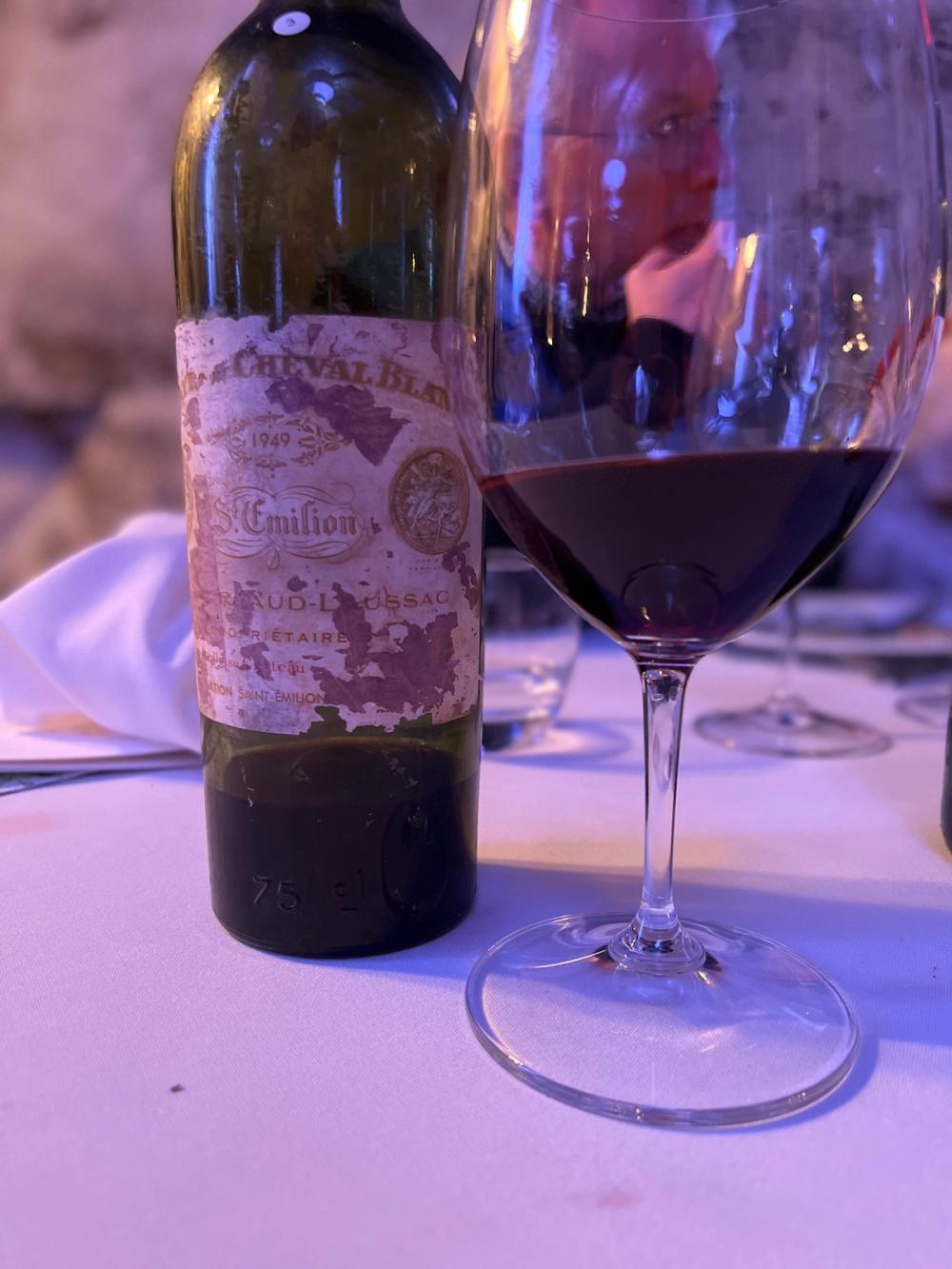
It’s always a treat to try a septuagenarian Claret, such as Château Cheval Blanc, St Emilion, Premier Grand Cru Classé A, 1949 with this House’s seductive beauty so effortlessly and weightlessly framed. But this beauty was out-and-out ethereal. Perhaps most surprising of all was the bright freshness of the wine. There was still plenty of fruit still here with notes of burnt sugar, wet earth and an intensely long, dry finish. Amazing that were no faults with the wine – at all – almost uncanny. The 1998 Cheval Blanc that we tasted the ’49 against was understandably leaner but I’ll bet this will reach its 70th birthday with room on the cake for extra candles.
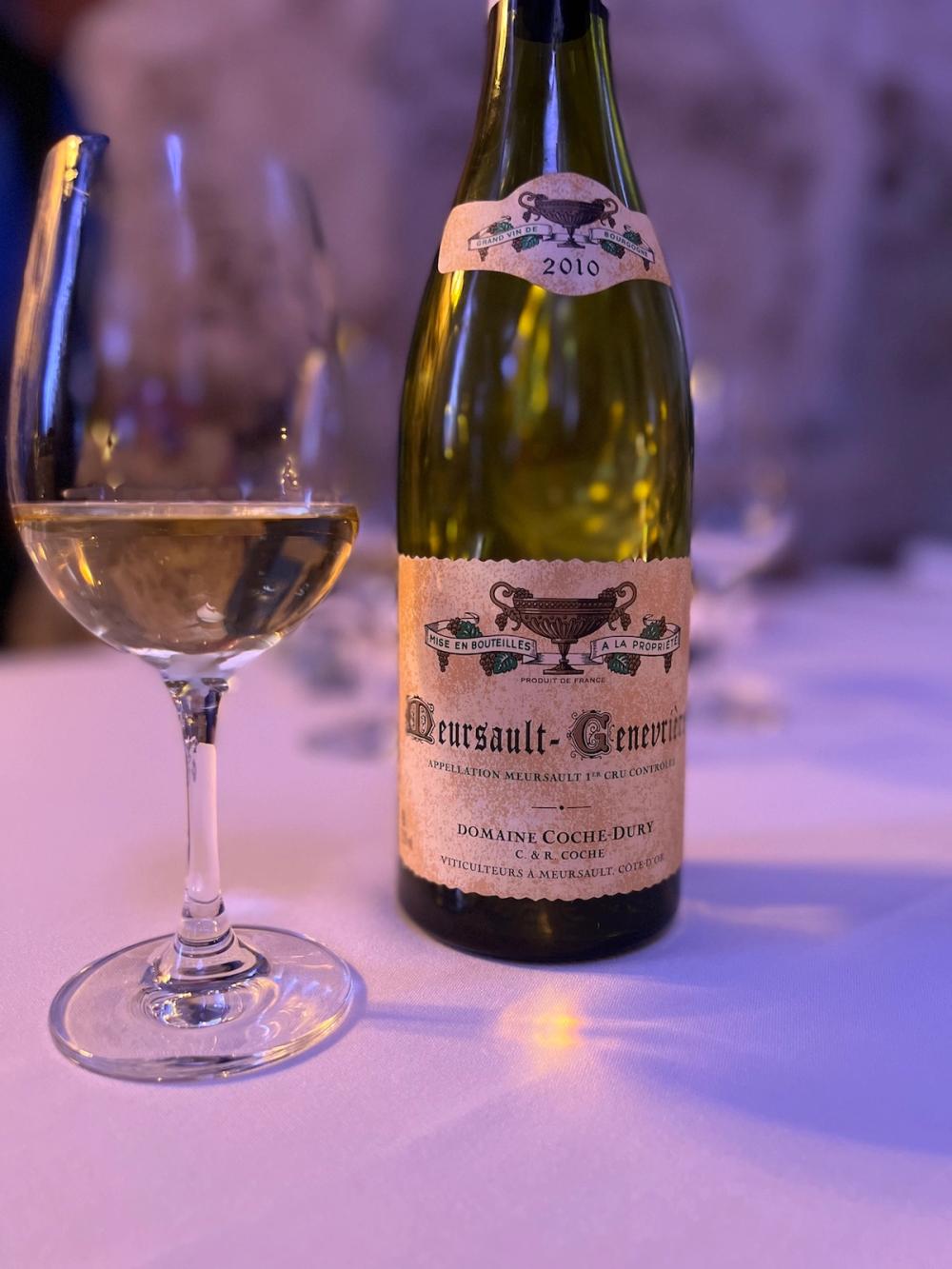
This tasting kicked off with a Krug and a DP from 1996, the former magnificent and making the DP seem almost pedestrian, which were followed by Domaine Jean François Coche-Dury, Meursault-Genevrières Premier Cru, 2010 paired against a Domaine des Comtes Lafon, Meursault, Genevrières Premier Cru, 2002. The ’02 was in fact an ’04 and was a tad flat and blousy.
The Coche-Dury Genevrières 2010, on the other hand, was my wine of the tasting. Lifted, precise, complex, bright acidity just a pointe, perfect balance – in fact it sat on the palate like a perfect mould of my mouth, vinous, clean as a whistle with a lick of lemon curd and sesame. Insane. Where do wines get this energy from?
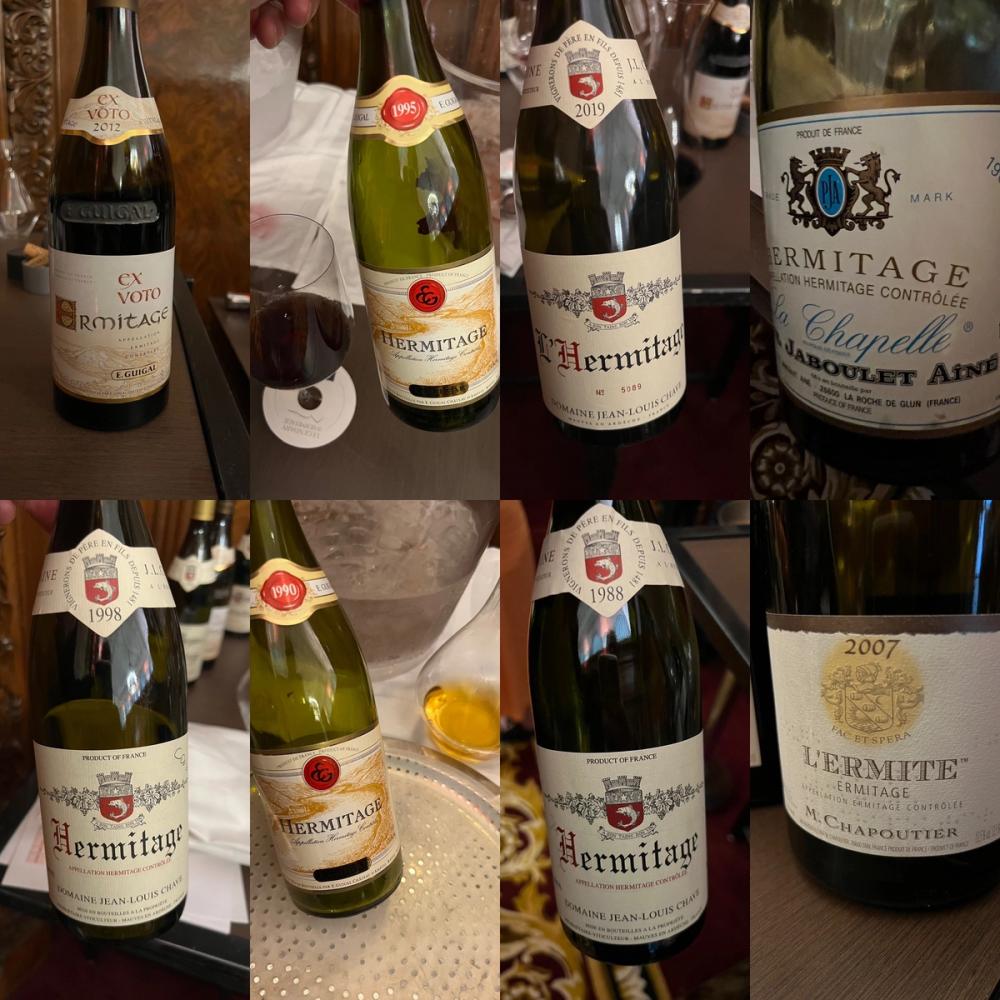
The Legendary (H)ermitage dinner in August was the first time in 31 years that the AOC had collectively celebrated its wines and it was also the first time it had done so in London, the reason presumably for all of the top producers to be there with library wines that would bring most Syrah lovers out in a cold sweat. The dinner was an embarrassment of riches with Chave’s 1988 and 1998 being two cases in point.
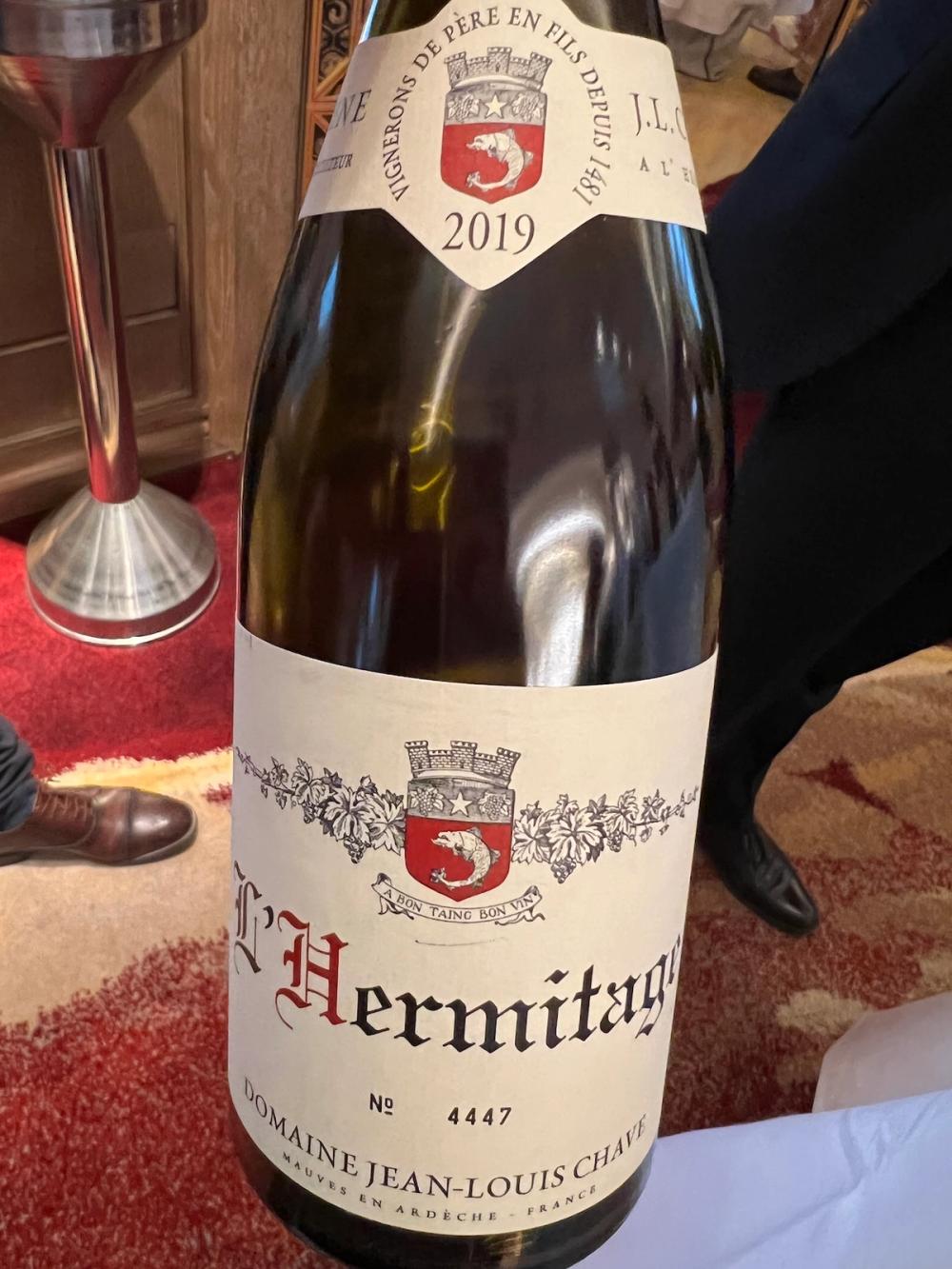
For me, though, it was his new wine Hermitage 2019, Domaine Jean-Louis Chave that we tasted before dinner which was my wine of the evening, primarily because, tasted alongside a range of other 2019s it just stood out a country mile from the other wines on show as a sheer, brilliant piece of winemaking. There is intensity and concentration as you might expect from the vintage but the purity of the fruit is staggering. Deep purple, alluring aromas, dense, textured, mineral-charged with such amazing balance. Chapeau.
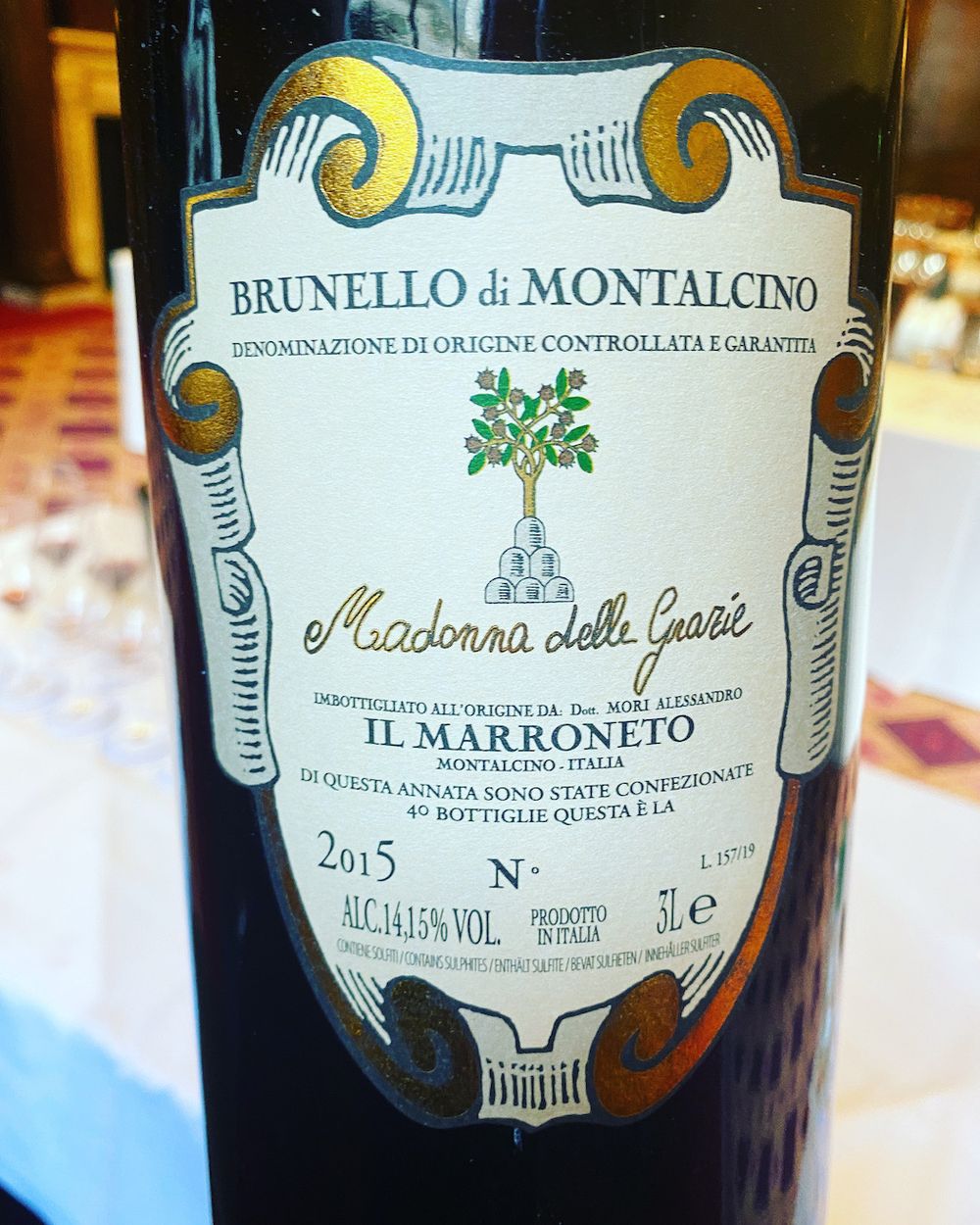
“I’m glad I’m not having to write that up,” was what one fellow critic said to me as we trooped out of the Alessandro Marroneto masterclass that was the highlight of Armit’s annual portfolio tasting. There was nothing at all wrong with the wines or the discourse, except for the fact winemaker Alessandro talked for two hours instead of one and did so in a rambling, poetic, elusive and sometimes challenging manner. It was great fun, if hard to pin down exactly what he meant half the time.
He was there showing a range of his top Brunellos, the highlight for me was the Madonna della Grazie 2015, Brunello di Montalcino, Il Marroneto which was a sensational cuvée from his ancient single vineyard, a wine whose components are working so seamlessly together that it eschews traditional description. The clincher is the way the ripe fruit cloaks the firm structure so that on entry the wine is deceptively silky, fresh and open with fine-boned tannins. There’s a complex array of tastes and aromas – ripe red cherries, fresh rose petals, red liquorice, rosehip syrup, a touch of menthol and some savoury notes creeping in – and then you feel the power and intensity of the wine. Alessandro describes it poetically as “a friend of life” and to be honest the double magnum it was poured from did not seem big enough. No wonder allocations are so closely metered out.
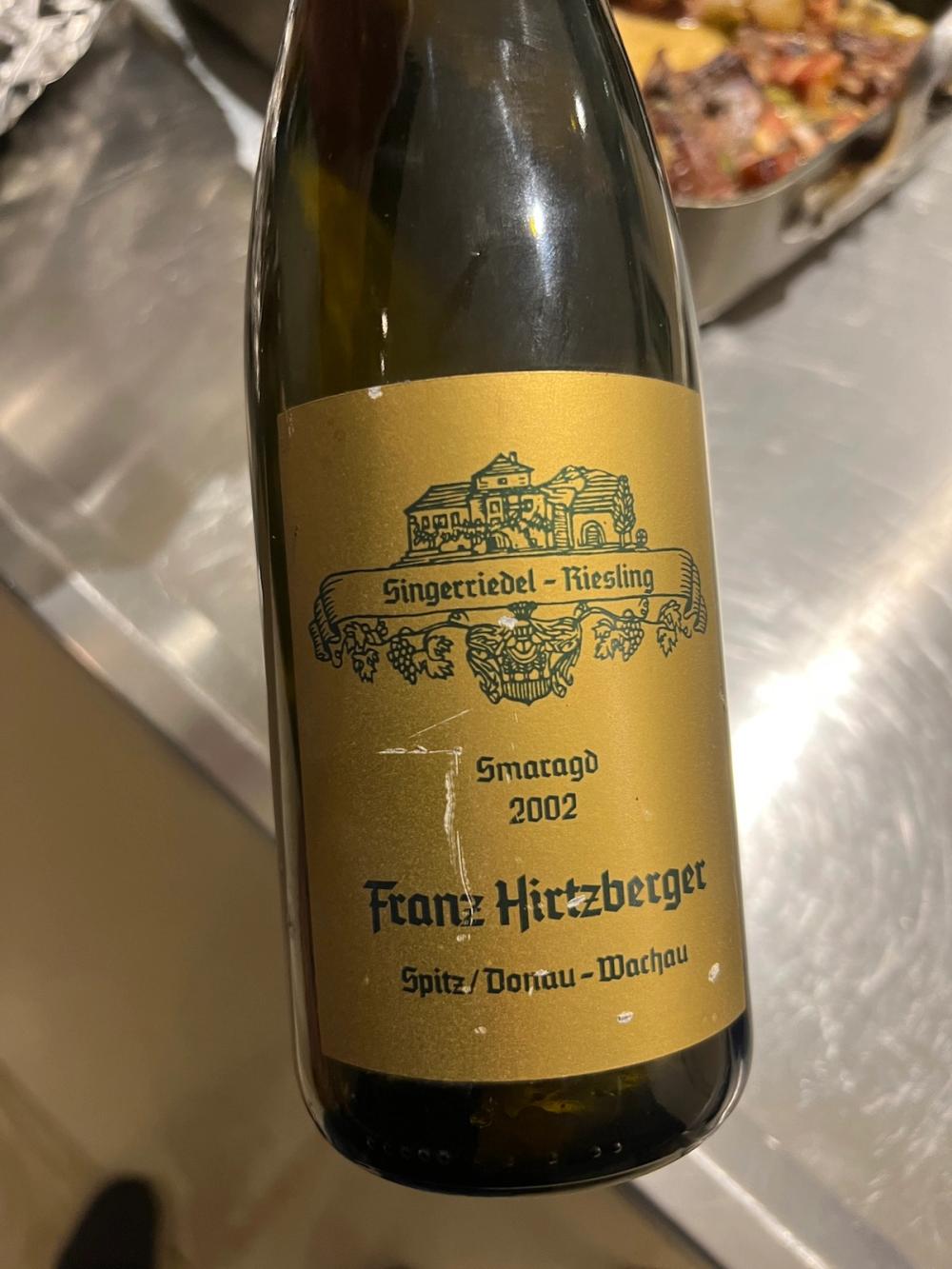
Last year also saw the return of VieVinum, Austria’s stylish wine fair in Vienna. The ‘100 Best Austrian Wines’ tasting which kicked off proceedings was a pinch-yourself moment – sampling the finest wines in grand surroundings in what is my birth city. The wine fair element was an opportunity to confirm that Austrian wine is currently one of the most exciting melting pots of winemaking talent worldwide, while the showpiece tastings was a chance to verify just how well these wines age.
Singerriedel Risling, Smaragd, 2002 Franz Hirtzberger was a case in point, a wine from my own reserves, that commanded rapt silence when I opened it with friends. This was the last from a six-pack and it was absolutely on song with decades left in the tank. Full, broad, a lot of extract, touch of botrytis, and layers of yellow fruit in a rich golden-hued nectar. It’s legally dry although one suspects 7gms residual sugar is there. So, so good.
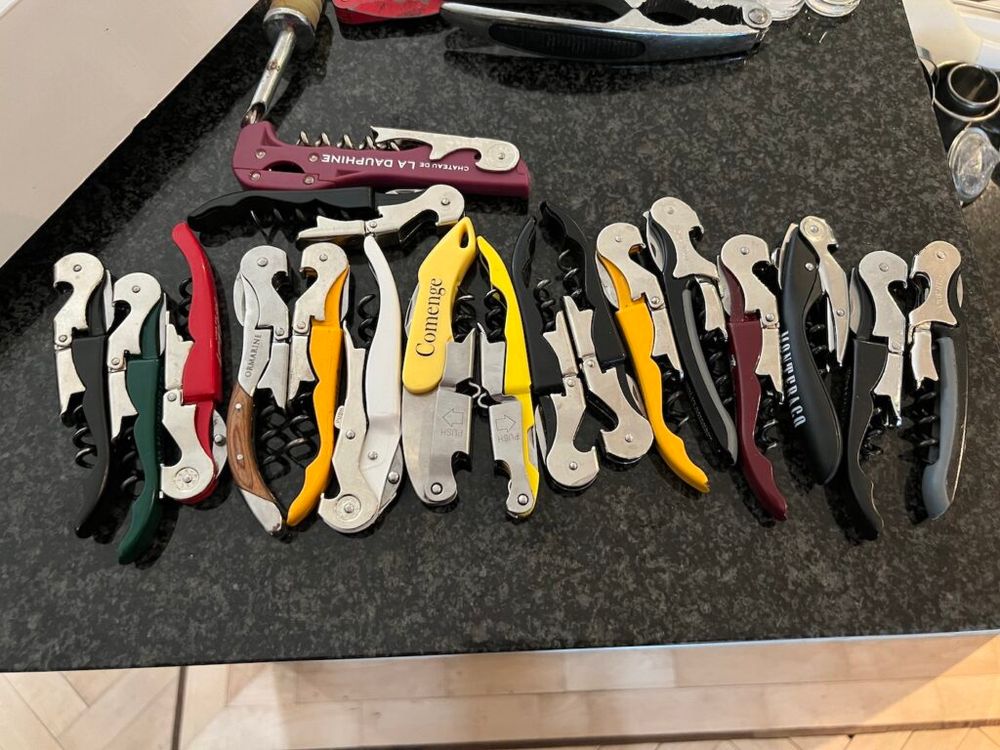
So that was the year that was, a year in which I finally moved out of London after 40 years, a time in which I found I had collected a fair share of corkscrews! Happy 2023 everyone.






























